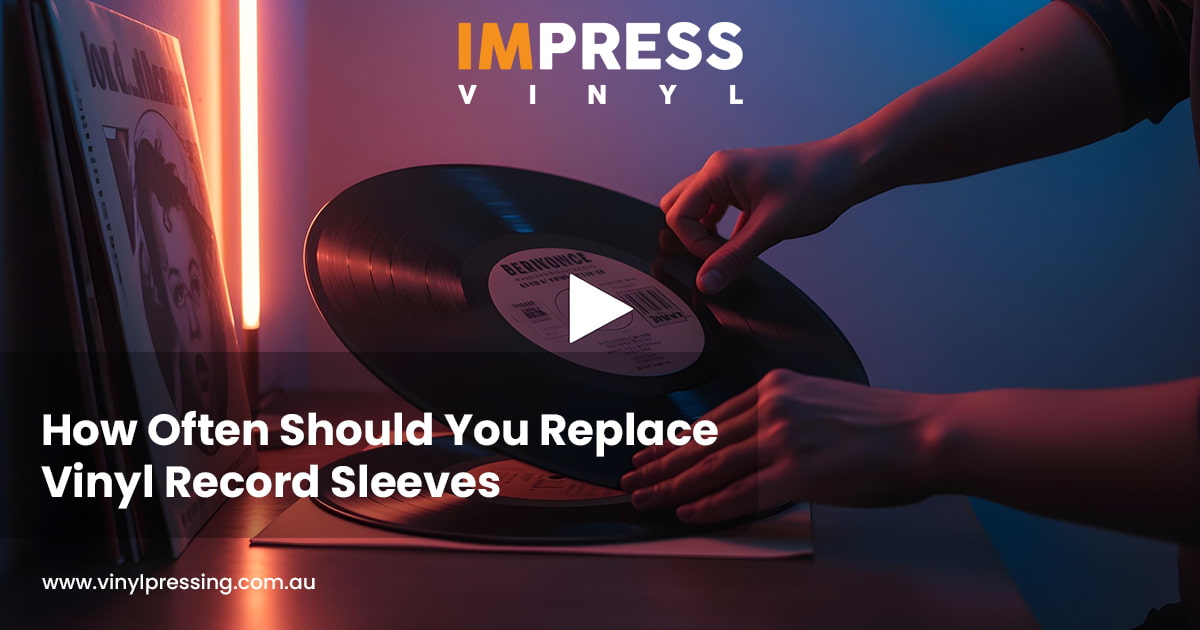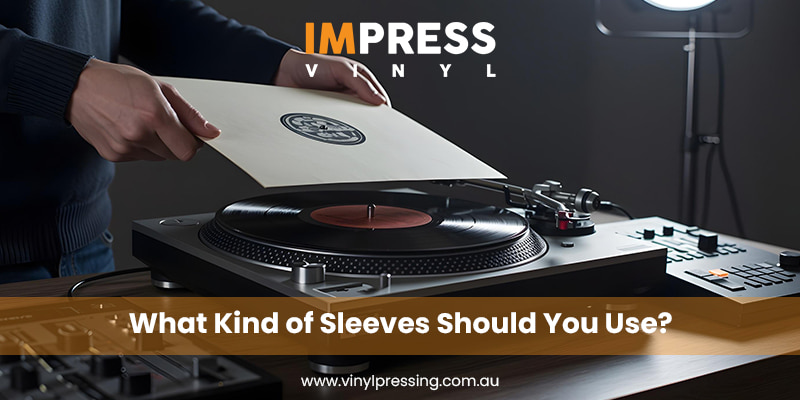How Often Should You Replace Vinyl Record Sleeves?

Have you ever pulled out a favorite record and noticed a layer of dust, some scuffs or worse a split sleeve?
If you are a vinyl enthusiast then you have probably asked yourself at some point: “Is it time to replace my record sleeves?” It is not a glamorous question but it is one that can have a real impact on the longevity of your collection.
Vinyl is more than just music. It is a tactile experience, a collector’s joy and for many, a serious investment.
But protecting that investment does not end with the record itself. The sleeves both inner and outer play a massive role in preserving your vinyl for years to come.
So let’s talk about how often you should replace them, how to know when it is time and what options are best for your needs.
Why Record Sleeves Matter More Than You Think
At first look, sleeves might seem like simple packaging. But think of them as the first and last line of defense.
A quality record sleeve guards against dust, static, moisture, scratches and even mold. It is the vinyl’s armor and over time, even armor wears down.
You might be surprised to know that poorly maintained sleeves are one of the top reasons vinyl degrades over time. Many collectors unknowingly keep old, acidic paper inner sleeves that can scuff or chemically interact with the record’s surface.
The result? A once-pristine LP that now crackles and pops for all the wrong reasons.
Sounds like something to avoid, right?
How Often Should You Replace Vinyl Sleeves?
The short answer is: it depends on the type of sleeve and the conditions in which you store your collection. But here is a more nuanced answer:
Inner Sleeves: Replace Every 3–5 Years
Inner sleeves come into direct contact with your vinyl, so they bear the brunt of wear and tear. If you are using the original paper sleeve that came with the album and especially older ones then it might be time to part ways.
Paper sleeves, especially unlined ones, can disintegrate, leave residue or cause static buildup.
If you are already using polyethylene-lined inner sleeves or high-density anti-static sleeves, they will last longer but they are not immortal. Look for signs like:
- Visible wear or creasing
- Paper flakes or dust
- Stiffness or brittleness
- Any musty odor or signs of mold
Even high-quality inner sleeves can degrade over time especially if exposed to fluctuating humidity levels or improper storage.
A good rule of thumb? Every few years, give your records and their inner sleeves a check-up. If the sleeve no longer feels smooth and safe then swap it out.
Outer Sleeves: Replace When They’re Visibly Damaged
Outer sleeves do not touch the vinyl directly, but they protect the album jacket and by extension, your investment in the artwork and resale value. Most collectors use clear polypropylene or polyethylene outer sleeves, which can cloud, yellow or crack over time.
You should replace them if you notice:
- Foggy, sticky or discolored plastic
- Tears or looseness around the seams
- A fit that is too tight or too loose
- Any signs of mold or mildew (especially if stored in humid environments)
If your records are exposed to sunlight or heat then the sleeves will degrade more quickly.
Storing them vertically in a cool, dry place will help extend their life but plan to replace outer sleeves every 5–7 years, or sooner if you see signs of wear.
What Kind of Sleeves Should You Use?
This might be the perfect time to revisit the kind of sleeves you are using. Not all sleeves are created equal and the “standard” paper sleeves many records come with are frankly terrible at long-term protection.
If you are going to invest in vinyl sleeve replacement then here is what you might want to consider:

Inner Sleeves
- Best choice: Polyethylene-lined paper or rice paper sleeves (anti-static)
- Avoid: Plain paper sleeves, paper with center cutouts (which scratch over time)
Outer Sleeves
- Best choice: 3 mil or higher polypropylene sleeves (archival quality, clear view)
- Avoid: PVC sleeves—they can off-gas and warp records over time
Sounds like a lot to consider? Don’t worry we all have been there. It is not about perfection, it is about doing what is best for your collection based on your storage conditions, handling habits and how often you listen to your records.
Warning Signs Your Sleeves Need Replacing
Let’s make this real. You grab a record you haven’t played in a while and notice:
- The sleeve sticks a little when you pull it out
- There’s a faint mildew smell
- The plastic feels cloudy or greasy
- Your record comes out covered in dust or fine white flakes
If you’ve experienced any of these, it’s definitely time to change vinyl record sleeves. Think of it as a vinyl record sleeve maintenance check for your collection.
The Collectibility Factor
If you are serious about the value of your vinyl—especially rare pressings or limited editions—then replacing sleeves isn’t just a maintenance task, it’s a preservation strategy.
Collectors know that a well-preserved jacket and clean inner sleeve can drastically impact resale value. In fact, many serious collectors include new archival-grade sleeves with each record when they sell or trade.
So if you’re planning to pass your collection down, or just want to keep it in mint condition, investing in sleeve replacements every few years is a no-brainer.
Maintaining the Habit
Let’s be honest—replacing sleeves for hundreds of records might sound tedious. But here’s a trick: replace vinyl record sleeves, as you listen. Every time you pull out a record, check its sleeve. If it feels worn, cloudy, or too snug, add it to your “update list.”
And doing this can help you fall in love with parts of your collection you forgot about.
When Should You Refresh Your Record Sleeves
There’s no one-size-fits-all answer, but here’s what you should remember:
- Inner sleeves replace vinyl record sleeves every 3–5 years, or if damaged
- Outer sleeves change record sleeves every 5–7 years, or when they become cloudy or torn
- Watch for signs of wear, especially if you live in a humid or dusty environment
- Use archival-quality materials to protect your records long-term
A bit of maintenance today means a longer life for your records tomorrow. Plus, let’s be real—it just feels good to give your collection some love.
Need Premium-Quality Sleeves Without the Guesswork?
At Impress Vinyl we have helped hundreds of collectors protect what they love with archival-grade vinyl sleeves that are anti-static, acid-free and built to last. Whether you are refreshing a handful of vinyl record pressing or your entire shelf, we have got a range of inner and outer sleeves designed for audiophiles, DJs and serious collectors.